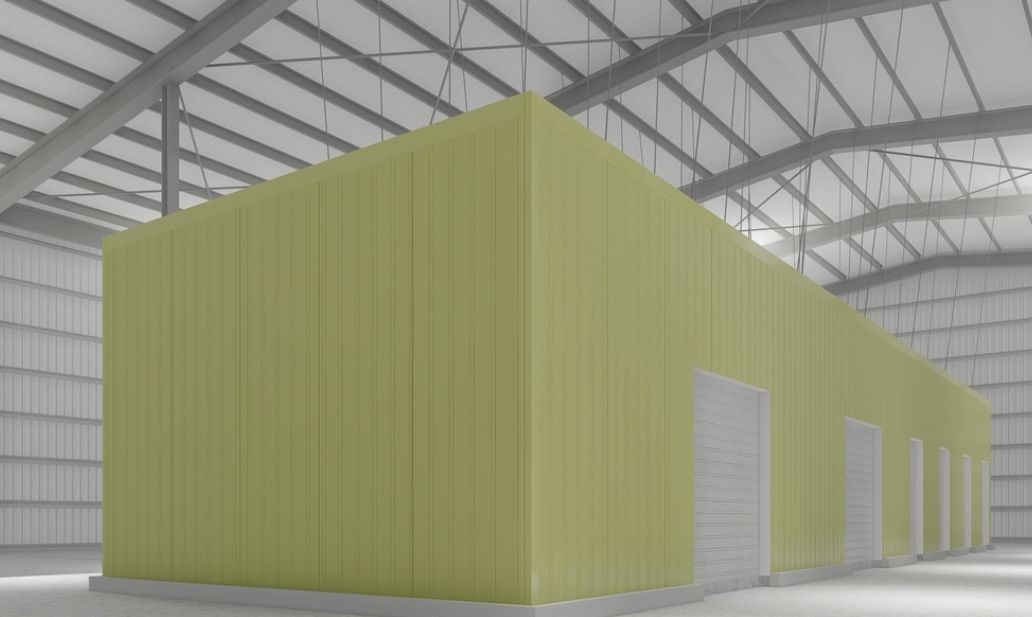How energy-efficient are cold storage panels

Whether it’s pharmaceutical production or food safety, cold storage facilities ensure the smooth operation of these industries. Maintaining these temperature-controlled environments incurs staggering energy costs. Cold storage panels are not only crucial structural components but also a key barrier to prevent heat intrusion and save costs. SDpanle explains the energy efficiency of cold storage panels.
Heat load faced by cold storage
Before understanding the energy efficiency of cold storage panels, we must first understand the heat loads faced by cold storage facilities. These heat loads cause the temperature in cold storage facilities to rise, consuming a large amount of energy.
- External heat conduction:Due to the temperature difference, the heat from the high external temperature will flow into the cold storage through the building’s envelope, which includes the cold storage roof panels, cold storage wall panels and floors.
- Convection of external heat:After a large amount of external heat is blocked by the enclosure structure, a small amount of heat still penetrates through gaps, doors, and poorly sealed areas, but prolonged convection also consumes the cold storage’s energy.
- Radiation:This heat enters the cold storage through the heat transfer from the warm outer surface, such as sunlight shining on the cold storage roof panel. The transfer of this heat day after day will also increase the temperature of the cold storage, thereby consuming the energy of the cold storage.
- Radiation:This heat enters the cold storage through the heat transfer from the warm outer surface, such as sunlight shining on the cold storage roof panel. The transfer of this heat day after day will also increase the temperature of the cold storage, thereby consuming the energy of the cold storage.
Energy efficiency of cold storage panels
Select suitable cold storage panels based on the temperature control requirements of different cold storage facilities. Cold storage panels feature an advanced composite structure designed to minimize heat transfer. Their energy-saving effects stem from the following key characteristics:
High-performance insulation core of cold storage panels
High-performance core is the key “core” of cold storage panels. In this temperature-controlled facility, the selection of the most suitable insulation core determines the energy efficiency of the cold storage panels.
- Core material: Common materials include polyurethane (PUR), polyisocyanurate (PIR), rock wool, and expanded polystyrene (EPS). Among these core materials, polyurethane (PUR) and polyisocyanurate (PIR) are the most commonly used. Among these, PIR cold storage panel offer superior fire resistance and better thermal insulation compared to PUR cold storage panel. Rock wool cold storage panels are only used in areas with higher fire safety requirements for cold storage facilities. While EPS cold storage panels are cost-effective, their poor thermal insulation performance makes them unsuitable for cold storage facilities with higher performance requirements.
- Ultra-Low Thermal Conductivity (k-value):This is a key performance metric for cold storage panels, measuring the material’s inherent thermal conductivity. The lower the k-value, the better the insulation. PIR/PUR core materials have very low k-values, typically between 0.021 and 0.023 W/(m·K) at an average temperature of 10°C. EPS has a slightly higher k-value (approximately 0.033-0.038 W/(m·K)), making it less efficient per unit thickness, but generally more cost-effective in the mid-range temperature range.
- Closed-Cell Structure:The core material of cold storage panels consists of millions of tiny sealed air holes. This structure greatly hinders heat transfer through conduction (through solid materials) and convection (air flow within the foam).
Optimal Thickness
Selecting the optimal thickness for cold storage panels is a measure that balances cold storage energy efficiency and cost. The required thickness of cold storage panels depends on the target temperature of the cold storage facility (e.g., +2°C refrigeration vs. -25°C deep freezing), external environmental conditions, and the expected energy-saving effects. While 150mm and 200mm thick cold storage panels can reduce heat flow more effectively than 100mm panels, they also come at a higher cost. Therefore, balancing energy efficiency and cost is one of the key tasks for cold storage designers.
Thermal insulation and airtight structure
High-quality cold storage panels feature sophisticated tongue-and-groove or similar jointing systems. When properly installed and sealed (using specialized mastics and tapes), these create a virtually continuous insulation layer, eliminating “thermal bridges” – paths where heat can bypass the insulation through the panel joints or structural elements.
Energy efficiency advantages of cold storage panels
High-energy-efficiency cold storage panels have always been a high-frequency choice for designers of cold control facilities because they have irreplaceable advantages.
- Conduction to reduce heat load: Compared to traditional brick insulation structures or old-style panel systems, PIR cold storage panel and PUR cold storage panel can reduce heat gain through walls and roofs by 70-90% or even more. This is the biggest factor in reducing the workload of refrigeration equipment.
- Stable Temperatures: The excellent thermal insulation properties of cold storage panels minimize temperature fluctuations, reduce compressor cycles, and improve product quality and safety.
- Overall facility energy efficiency: While cold storage panels primarily target building envelope loads, their benefits cascade. Research and industry experience consistently show that high-performance cold storage panels can reduce a cold storage facility’s total energy consumption by 30-40% or more compared to less insulated alternatives. This translates to significant ongoing operational cost savings.
Conclusion
Cold storage panels are much more than just walls and ceilings. They are carefully designed thermal barriers designed to withstand constant heat influx. With advanced core materials, significant thickness, thermal joint systems, and airtight structures, they achieve exceptional energy efficiency. By significantly reducing conductive and convective heat loads (the greatest burden on refrigeration systems), they are the most effective factor in reducing cold storage energy consumption and operating costs.
